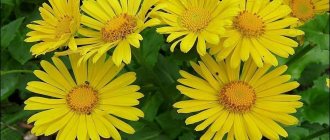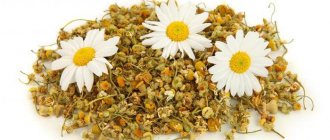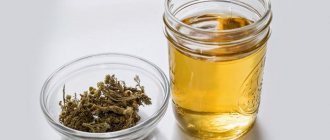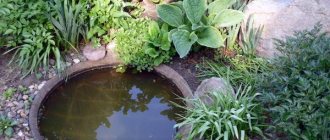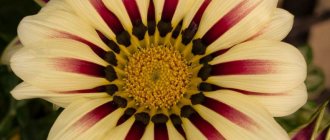Maiden daisy (Tanacetum parthenium, Matricaria parthenium) is a perennial herbaceous plant of the Asteraceae (Asteraceae) family. It is known by several names: "pyrethrum maiden", "matricaria exceptional", "chrysanthemum maiden" and "tanacetum". The species-specific maiden daisy and its lovely garden forms look good. Sometimes a perennial is criticized for being a shameless weed. This is a consequence of the vitality and unpretentiousness of the plant, which grows, blooms and reproduces remarkably even when no one cares for it.
Maiden daisy
Not everyone realizes what a useful plant chamomile is. In the Middle Ages it was called the "mother herb". The name of the plant (Greek parthenos - “maiden”) is most likely due to the fact that maiden chamomile helps with painful menstruation. In those distant times, maiden chamomile was kept in apothecary gardens and monastery gardens as a remedy to help women during childbirth. It was given at high temperatures and fevers as an anti-inflammatory and antipyretic agent.
Maiden's chamomile can also be used on the farm. First of all, as a reliable repellent of natural origin. And how nice it is that openwork bushes with light green foliage remain fresh and sometimes bloom even in the gloomy pre-winter period!
Caring for maiden chamomile
Place. Maiden's chamomile is light-loving, but grows well in partial shade. It is planted in flower beds, flower pots and balcony boxes. Gardeners who favor environmentally friendly methods of pest control can leave a few bushes under garden trees, next to shrubs and in vegetable beds.
The soil. Maiden chamomile has no special predilections for the composition and structure of soils, although luxurious bushes often grow on fertile garden soils. Seedlings of maiden chamomile feel good even between paving slabs, in cracked blind areas, near humus heaps or, unexpectedly for everyone, they end up in flower pots with indoor plants.
Watering. Pyrethrum maiden steadfastly tolerates temporary drought. But prolonged waterlogging is dangerous for him.
Winter hardiness. Maiden's chamomile easily tolerates spring and autumn frosts. In winter, its bushes often do not freeze out, but get wet. Once on our site, in the place where at the end of summer a delicate lawn of numerous young daisy bushes had turned green, in the spring a huge heavy snowdrift did not melt for a long time. When the snow completely melted, it turned out that only a few withered bushes remained from the emerald carpet. I had to clean the area with a rake and sow lawn grass.
Trimming. A maiden chamomile bush will bloom continuously and for a long time if all faded inflorescences are regularly removed. It is easier and faster to cut off the faded top part with garden shears.
Reproduction. Maiden chamomile is replanted even at the moment of flowering. The main thing is to preserve the earthen lump. Dividing adult overgrown bushes is a simple and accelerated propagation option. The seed method is also simple. Especially when the plant itself does this: its self-seeding will appear in a variety of places. Seedlings grow very quickly, they tolerate transplantation well and easily settle into a new place. Flowering begins 80 - 100 days after emergence.
Maiden chamomile bushes grow everywhere
Medicinal properties and contraindications
Due to the high content of valuable components, field chamomile has a whole range of beneficial properties. With the help of this plant it is possible to achieve the following effects:
- improve appetite and normalize food absorption;
- disinfect skin lesions;
- strengthen the immune system and protect the body from germs and infections;
- relieve allergy symptoms;
- reduce emotional stress;
- cope with inflammation, spasms and bleeding;
- eliminate female diseases of the uterus and ovaries;
- normalize stool in case of poisoning;
- restore proper functioning of the kidneys, stomach, liver;
- cleanse the skin, make it smoother and velvety;
- stimulate hair growth and activate the functions of hair follicles.
Chamomile tea brings great benefits to the body.
Although chamomile has many beneficial properties, it also has a number of contraindications.
The main restrictions include the following:
- Pregnancy. The plant can provoke the synthesis of estrogens - female sex hormones. Therefore, its use can cause changes in hormonal levels. During lactation, you also need to be careful when using chamomile-based products.
- Chronic pathologies. If they are present, you should definitely consult a doctor. For some diagnoses, chamomile cannot be used.
- Individual intolerance. In this case, there is a risk of swelling and bronchospasms.
Excessive and uncontrolled use of chamomile-based products can cause headaches, vomiting, and bleeding. There is also a risk of increased blood pressure.
It is best to collect flowers on the 5th day after blooming.
Varieties of maiden chamomile
The species-specific (that is, the simplest) maiden daisy looks very cute. The inflorescences look like a tiny daisy. Once you rub the bright light green leaves, a sharp but quite pleasant smell appears.
It is easy to create carpet plantings from the native maiden daisy, which can be used to decorate uneven places, tree trunks, and “draw” patterns on lawns. When sowing masses, it is important to prevent the appearance of seeds so that you do not have to fight self-seeding.
Garden forms and varieties of maiden chamomile look great. Unfortunately, there are few of them on sale. This is a low-growing garden variety with golden leaves only 15–20 cm high. There are also tall forms up to 60 cm high, which are suitable for cutting.
There are domestic varieties of maiden chamomile on sale: “Snow Globe”, “Golden Ball”, “Yellow Ball”, mixtures of varieties and several foreign varieties. They differ in color, degree of terryness and size of the pompoms of numerous inflorescences. These are compact bushes 30 - 50 cm high, which are easier to grow as an annual crop. Varietal maiden chamomile is more heat-loving than species chamomile, so it is advisable to insulate it for the winter or grow it annually as an annual plant.
Maiden chamomile flowers
Plants that do not belong to the genus Matricaria, but are often called daisies
Chamomiles belong to the family of aster plants, the list of species of which reaches almost 30 thousand. Most of them have a similar inflorescence structure, due to which these inflorescences look similar to each other, and the species are often called daisies if they do not know the exact name.
Moreover, even in the scientific community, some species of other genera are traditionally called daisies, since this has happened historically and the name has already been firmly assigned to the plant. For example, these are Persian and Dalmatian chamomile (representatives of the genus Pyrethrum), dog chamomile and field chamomile (representatives of the genus Pupavka), and Roman chamomile.
Most often, chamomile is confused with Roman chamomile. Its correct name is the noble navel (Chamaemelum nobile). It looks like this:
It has larger leaves and dense, opaque bushes, and there is no cavity in the inflorescences. Also unlike Matricaria chamomilla, it is a perennial plant.
Sometimes yellow daisy is also called yellow chamomile or yellow chamomile (Anthemis tinctoria). It can be distinguished from representatives of the genus Matricaria by its yellow marginal flowers:
Doronicum orientalis is also often called yellow chamomile:
Very similar to field daisies and odorless tripleurospermum inodorum, which previously belonged to the genus Matricaria and was known under the synonymous names Matricaria inodora and Matricaria perforata merat. Its characteristic difference is the absence of odor in the inflorescences.
Another closely related species is the Hooker's hooker (Tripleurospermum hookeri, or Matricaria hookeri), but it most often grows on sea coasts.
Some sources also include tansy or feverfew (Tanacetum parthenium) in the genus Matricaria. It can be found under the name Matricaria parthenium. When comparing pyrethrum with matricaria, you will notice that their inflorescences are similar, but the leaves of both plants are very different. In pyrethrum they are pinnately dissected and deeply cut. This difference is clearly visible in the picture:
Pyrethrum maiden is used in folk medicine. At the same time, for the preparation of medicines, it is mainly not the inflorescences that are taken, but the leaves. It is used for inflammatory diseases and skin lesions, in particular after insect bites.
Tansy, or feverfew (Pyrethrum corymbosum), like tansy, is a perennial plant. It is widespread in the European part of Russia, Crimea, Western Europe and some other regions. It grows mainly in deciduous forests and forest clearings. You can distinguish it from real daisies by the characteristic structural features of the bush and leaves. Its stems are single, branched at the top, and sparsely covered with pinnately dissected leaves with ovate-lanceolate lobes. The inflorescences contain from 3 to 15 flower baskets. Pyrethrum scutum is listed in the Red Book of some regions of Russia and Ukraine.
Other types of pyrethrum also have a certain similarity with matricaria. The two most famous of them are popularly called Persian (Turkish) chamomile and meat-red chamomile, which can be distinguished from true representatives of the genus Matricaria by the unusual color of the marginal flowers, which in these plants is pink and red. Also, Persian and Dalmatian chamomile (the latter is similar to the chamomile in color) have significantly larger inflorescences.
The wild-growing stinking navel, or as it is also called dog chamomile, is very similar to pharmaceutical chamomile. It is distinguished by the sharp unpleasant smell of inflorescences.
Annual and compound-leaved polypetalous plants (Erigeron annuus and compositus) also have an external resemblance to matricaria. They grow mainly in North America.
A variety of daisies, which are characterized by a yellow core and white petals, can also be confused with daisies.
Meadow daisies are called leucanthemum vulgare. It is distinguished by single inflorescences, the diameter of which ranges from 2.5 to 6 cm.
Large flower baskets are also characteristic of anacyclus. Their diameter is about 5 cm, and they do not grow singly, but in corymbose inflorescences. This plant can be found in the Middle East, Turkey and Mediterranean countries.
American chamomile is called Echinacea purpurea. The height of its stems is 90-100 cm, and the diameter of the inflorescences is about 15 cm. It is also distinguished from chamomile inflorescences by the purple color of the marginal flowers.
Care for feverfew (by month)
Winter (January - February). You can sow seeds even at such an early date if additional lighting is possible. Such early sowing produces flowering bushes by the May holidays.
March. Sowing seeds for seedlings for early flowering. Shoots appear in 7 - 11 days. In order not to thin out the seedlings, small seeds are mixed with dry sand. In a room, seedlings quickly stretch, so it is better to keep them on a windowsill next to a window, on an insulated glazed loggia or on a veranda.
April. Sowing continues. It can be carried out both at home and in greenhouses. In a greenhouse or under a film, the seeds are covered with a layer of soil of 3–5 mm. In cool spring, seedlings sometimes appear later, only after 15–18 days.
May June. When planting seedlings, take into account that overgrown bushes need a space of about 25 x 30 cm. At first, the seedlings are shaded from the bright sun. Sow the seeds in open ground so that the maiden chamomile blooms by the end of summer. Self-seeding weeding. Transplanting overwintered maiden chamomile bushes and self-sowing to a new location.
July. Mass flowering of maiden chamomile. Transplanting self-seeding and flowering bushes to new places. Watering in dry times. Fertilizing on poor soils. Faded inflorescences are cut off to prevent mass self-seeding. Sowing seeds for flowering early next summer.
August. Trimming faded inflorescences. Transplanting flowering plants into pots and balcony boxes, transferring them to the veranda, balcony or windowsill. Watering in dry weather.
September. Flowering continues, as adult plants can easily tolerate frosts down to -4°C.
October, first half of November. In early winter, pruning the ground part. Mulching the soil or using spruce branches to cover varietal pyrethrums.
Maiden chamomile bush
What do these flowers look like?
Chamomiles and most similar plants belong to the Asteraceae family. Its representatives are easily identified by :
- herbaceous stem;
- elongated shape of the petals;
- a basket framed with petals;
- weak aroma.
The most common type of chamomile is chamomile . Large or decorative ones are most often found in flower beds. Asters, some varieties of chrysanthemums and gatsanias also have large inflorescences.
Multi-colored daisies
The first sign by which you can distinguish them is the color of the petals. In chamomile or decorative chamomile they are white. There are similar flowers with different shades of petals .
Blue
The blue color indicates that Asters or Cineraria have grown . The latter's petals are sometimes colored half white, which creates a pleasant decorative effect.
Colored
Colored daisies, which have petals in different colors and shades, are called Anemone Blend or Anemone Corona . Echinacea varieties also have similar colors.
Yellow
Doronicum (kozulnik) is most often confused with yellow ones . You can also find Pyrethrum with lemon-colored petals, this variety is very similar to Chrysanthemum due to its double petals and small shrub shape.
Purple and lilac
Asters, Osteospermum with purple petals look very beautiful in borders and bouquets . This also includes lilac daisies; the brightness and type of shades vary depending on the variety of a particular plant species.
Chemical composition of inflorescences
Lepidoteca fragrant differs from ordinary chamomile in the very small amount of chamazulene in the flowers, a component that determines the anti-inflammatory, local anesthetic and calming effects of plant preparations. If peeled chamomile contains an average of about 5% chamazulene in essential oil, then in fragrant chamomile oil it is found only in trace amounts (less than 0.1%). This is why the medical use of green chamomile is very limited.
Even those actions that are caused by other components are very weakly manifested in green chamomile.
At the same time, the composition of fragrant chamomile flowers includes many components with pharmacological properties:
- Terpenoids, which have mild anesthetic and antiseptic effects;
- Flavonoids, known for their ability to suppress free radical activity;
- Coumarins, which provide some blood thinning and reduce blood clotting;
- Vitamins - provitamin A and ascorbic acid;
- Gum;
- Several types of bitters;
- Essential oil with a very strong pleasant aroma, more pronounced than that of peeled chamomile.
It is due to them that plant preparations exert certain therapeutic effects, and green chamomile itself is included in the pharmacopoeias of several countries and is actively used in pharmacognosy.
At the same time, both fresh inflorescences and medicinal raw materials of green chamomile contain some substances that can cause allergic reactions. This causes some restrictions on the use of this plant.
Features of culture
Low-growing daisies are perfect for decorating borders and borders.
Description and characteristics of the species:
- Chamomile (lat. Matricaria) is a perennial herbaceous plant that is a member of the Asteraceae or Asteraceae family. Unites about 30 species of low fragrant herbs. Representatives of the genus have pinnately dissected leaves. Inflorescences are spherical baskets with two types of flowers: yellow tubular in the center, along the edge - ligulate pistillate petals of white or yellow color. The most famous species of Matricaria is chamomile. The essential oil of the plant has healing properties and is widely used in medicine and cosmetology.
- Large perennial or decorative garden chamomile combines the names of other genera of the Asteraceae or Compositae family: gerbera, doronicum, common cornflower, osteospermum, pyrethrum, echinacea. They are characterized by reed flowers, the central part of the inflorescence is flat, usually dark yellow.
- Most types of daisies are grown as ornamental flowering plants. Used in rockeries and borders, for making bouquets.
- Almost all types of daisies are easy to care for and resistant to frost. They grow quickly and are easily propagated by seeds or by dividing the bush.
Chamomiles are beautiful and easy-to-care flowers.
The author of the video explains how to properly plant garden daisies and how to propagate them:

